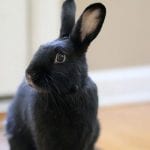Scientific Facts
| Common Name: | Holland Lop |
| Scientific Name: | Oryctolagus Cuniculus |
| Life Span: | About 10 years |
| Size (Adult): | Small |
| Weight (Adult) | Female: 4 pounds; Male: 4 pounds |
| Habitat: | Woodlands, agricultural sites, sand dunes, deserts |
| Body Shape: | Dwarf |
| Country of Origin: | Netherlands |
Physical Description
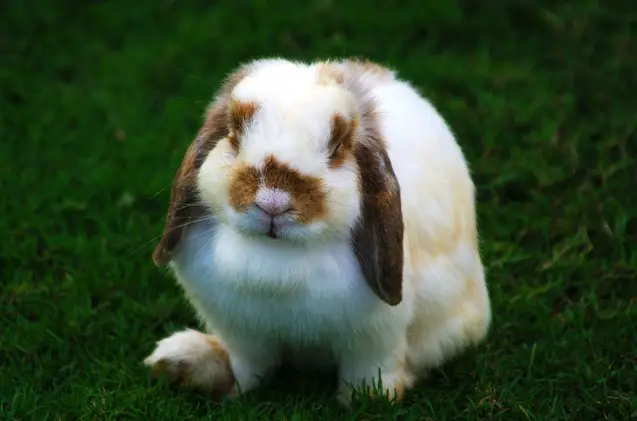
Holland Lops perfectly fit the description of the term “cute”. They are small in size, with lop-ears. One look at them can already make your heart melt. For this reason, Holland Lops are among the most popular breeds in the USA. They weigh less than 4 pounds, with average length, their unique lop ears and rollback fur.
The standard of perfection required among Holland Lops includes having a compact body type which is thickset, massive and short. The same standard also specifies the ideal for the ears, head, fur and other characteristics of the Holland Lop.
Fast Facts
Best Suited For: apartment rabbits, house rabbits, single owners, families with children, first-time owners, indoor/outdoor enclosure
Temperament: sweet, energetic, curious
Comparable Breeds: French Lop, Netherland Dwarf Rabbit
Coat and Colors
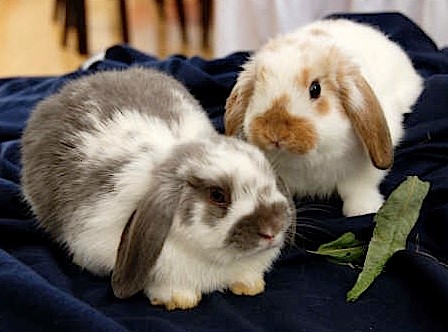
The coats of Holland Lops are coarse, with a medium length. Their coat is low maintenance, and does not even need much grooming. In fact, once a week, or once every two weeks will do. In spring time, they begin to shed more, though slightly brushing their fur more often will take care of the hair loss.
In terms of colors, the Holland Lop is divided into two categories: solid and broken. Some other color options include tortoise, chinchilla, sable, seal, fawn, cream, orange, frosty, chestnut and red.
History of the Breed
As explained by the book “Domestic Rabbits and their Histories”, as well as the website of the Holland Lop Rabbit Specialty Club, Holland Lops took over a decade to fully develop. This process was started by a rabbit breeder in Holland named Adrian de Cock back in 1949.
The origin breeds mainly included Netherland Dwarfs and French Lops, and a single English Lop in the mix. Eventually, the Holland Lop bred was recognized in 1964 by the national rabbit club in the Netherlands. In the mid-1970s, the breed arrived in the USA and was recognized in 1979 by the American Rabbit Breeders Association at a convention in Tucson, Arizona. It was introduced for the first time at the 1980 ARBA convention.
Fun Facts
- With its size, the Holland Lop is both loving and charming.
- Their ears may not immediately lop right after birth. It usually takes up to 6 months or more for the ears to lop.
- Holland Lop rabbits come in different colors, grouped into 8 main categories: the self, agouti, shaded, tan, wideband, pattern, broke, and pointed white ticked. Every category also comes with specific colors.
Personality
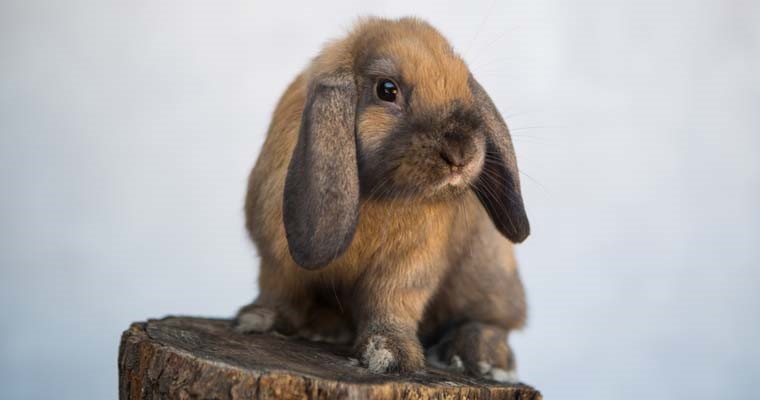
Just like other species, the individual personalities of rabbits vary, though most of the Holland Lops have a common personality trait. For one, they are friendly. It is interesting to note that male Holland Lops are friendlier compared to females.
These rabbits are easy to handle and easy-going. The bucks are really outgoing, and loves being petted. Females, or the does, are a bit shy and may go through the nippy phase when they want to be bred, though this personality passes as they mature. These rabbits are very soft.
Temperament and Behavior
The best thing about the temperament and behavior of a Holland Lop is that they feel happy when they are given enough time to play out of their enclosures. If your rabbit needs to be kept in an indoor space, it should still be allowed to roam around from time to time so that it can stretch its legs and prevent cramped muscle and leg issues. They also need to receive affection from their owners and sunlight.
Holland Lops are very active, and love to spend outdoors under the warm weather. If you have a safe, open yard, you may want to have an exercise pen to allow them enjoy a better quality of life. The temperament of your rabbit will be happier if their exercise and outdoor needs are met.
While Lops are generally non-aggressive, they can be somewhat tenacious. They chew quite a bit. This means that you can give them chew toys, pine cones or hay to chew on. These rabbits will hide from you, and feel nervous around you until they feel familiar, or used to you. This will not be achieved just by picking them up periodically. Avoid picking them up by the ears. Pet your Holland Lop regularly even if they have not yet gotten familiar with you yet.
Care
Holland Lop rabbits need the same care as with other rabbit breeds. This only means giving your pet proper diet, companionship and housing. The main food of rabbits are hay. In fact, it is the bulk of their diet. Some pellets designed specifically for rabbits also add the needed vitamins and minerals for their bodies. Vegetables, as well as limited quantities of fruit and treats can also be given.
One thing that should be noted when it comes to rabbit care is to ensure that they are provided with unlimited fresh water and hay as they want. Hay is very helpful in keeping their digestive tract productive and regular. A quality pellet is also needed for nutrients, but water and hay are considered as essentials.
Holland Lops are ideal pets for both children and adults. It is recommended for owners to watch their rabbits closely for any possible signs of illness. It is also as important to interact with their pets every day. An owner who spends time with them is loved by these rabbits over those who just wants to place them inside a cage and ignores them. Most rabbits thrive well after being interactive with their owners.
Spaying or Neutering
This can be done while your rabbits are still at a young age. However, most veterinarians wait until their pets reach six months of age in order to observe the safest practice on spaying. Even though bucks can generally be neutered at a young age, even as young as three months, in order to make them less aggressive, truth is, they are naturally unaggressive. This means that neutering the bucks is not really needed.
Supplies and Cages
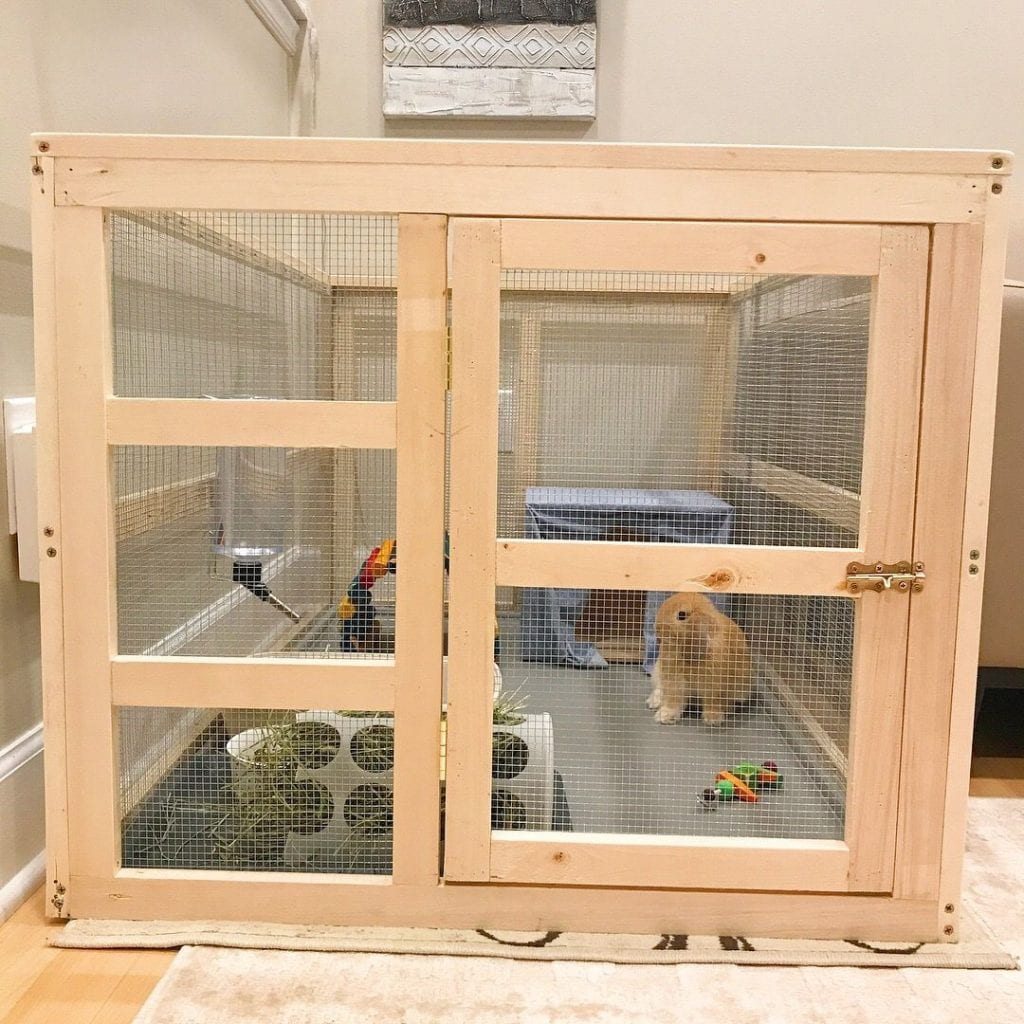
The home of your Holland Lops should have a wire enclosure and a plastic bottom. The bottom of the cage should have a soft bedding lined up so that it is comfortable for your rabbit. Since they are very small, there is no need to prepare a bigger enclosure. You can also secure rabbit hay feeders which attach to the side of the enclosure. This will allow your rabbit to pull them out and chew when they feel hungry.
For their bedding, you may want to use aspen or wood pellets. Pelleted horse bedding may also be used. Avoid giving them cedar or pine. The cage may be cleaned either using a cage safe cleaner or white vinegar. Avoid using bathroom cleaner, as well as other cleaning materials which may be toxic for the pets.
Everyday spot cleaning of their bedding is recommended, along with replacing it every week. This helps in getting rid of feces, which is essential in keeping both the rabbit, and its home, fresh and clean. This is not just good for the hygiene of the rabbit, but also for the owners, as it minimizes annoying smell.
Holland lops are very clean animals. They will even groom themselves, and each other. They are described as crepuscular, which means that they are mainly active at daytime and evening. Their feedings are mostly done in the evening. They sleep at the average of 8 hours. By nature, these rabbits are born without fur, and with their eyes closed. They love living in groups, which means that you may want to consider this if you are planning to pet a big group of Holland Lops.
Indoor vs. Outdoor Cage
You can also decide whether to place the cage of your rabbits indoors or outdoors. In any way, there are advantages that you can expect. Rabbits that reside indoors usually have longer lives, and are more social and happy. On the other hand, rabbits that are trained to live outdoors are usually skittish, and are vulnerable to weather changes, temperature, mites, predators, fleas, as well as other complications.
If you decide to keep your rabbits inside, but do not have enough space, you can prepare an outdoor cage to play and run around. On the other hand, outdoor cages are easier to clean. They also give your rabbits more room for playing and running around. Keep in mind, however, that the cage should be kept away from direct sunlight, and damp areas. The cage should also be well protected against predators including other pets at home, such as cats and dogs.
Teeth
Part of taking care of Holland Lops involves regular checkup of their teeth. This makes sure that their teeth do not overgrow. This is the reason why rabbits chew so much. Their teeth tend to grow too long. When this happens, they can grow right into the rabbi’s mouth and jaws. This could become extremely painful for the rabbit. With this in mind, a diet that is high in hay is recommended as it files down the rabbit’s teeth naturally as they chew. By keeping an eye on this, you can save yourself from expensive vet bills.
Other Notes
Holland Lops love chewing on things. They will even chew on wooden furniture, and even wiring if available. To avoid these mishaps and possible accidents, give your pet hay or chew toys in addition to their food. Make sure that everything that goes to their mouth have not been sprayed with herbicide or pesticides. Younger lops need alfalfa hay as it gives them enough calcium, needed for their growing bones. The adult ones, on the other hand, love legume hay. It is important to be careful about giving just any yard clippings to your Lops.
These rabbits are recommended to be kept in pairs for the reason of companionship. In fact, it has been observed that being with another rabbit contributes to the happiness of the rabbit, even allowing it to live longer. In the wild, these rabbits are extremely social. This is also something that happens with those in captivity.
De-worming is also recommended for Holland Lops. It is a major concern, and need to be completed in the spring and fall. For this, you can use a pea-sized amount of de-worming paste and put it in their mouth. This is sufficient for your pet.
Health Concerns
These rabbits are prone to all types of diseases that are common among rabbits, without any specific illness unique to them. With this in mind, it is recommended to check for possible signs of illnesses. They should also receive standard vaccinations.
Expert breeders note that unlike bigger rabbits, Holland Lops have sensitive digestive systems. As such, check baby rabbits for enteritis, bloat and gut stasis, especially if they are less than 8 weeks old. Check for ear or fur mites, fleas and ticks. This is often a result of poor hygiene, husbandry and management.
Some ill-health signs that you may also want to check include lack of appetite for eating or drinking, nasal and eye discharge, diarrhea, and other symptoms.
Grooming
Holland Lops need regular grooming, at least once a week. You may even do it more when they are in the molting period, in order to prevent wool blocks, where the rabbits may ingest some fur. This is because they are usually self-grooming. When the fur accumulates, their digestive system may be blocked.
It is recommended to avoid bathing your rabbits as it stresses them. Do some spot-cleaning using a damp towel if they are dirty. Trim their nails every month, and check for overgrowth teeth. Their cages, both indoors and outdoors, should also be spacious enough to allow them to hop and stretch freely.
Breeding
Holland Lops should be at least 6 months before they can start breeding. The bucks can be as young as 4.5 months, though it is often best to wait until 6 months, until you are sure that they are ready. For male rabbits, it is important to make sure that their testicles have dropped.
The gestation period of a rabbit is usually 28 to 33 days, while most of the does deliver on day 30-31. Before starting to breed, choose a date that you want for birth, so that you can be at home to provide the doe her nesting box. It is also recommended to plan ahead to ensure that you will be there for two months wherein the babies need to be with their mother, just to avoid any issues from arising before they are weaned.
Rabbits may conceive and give birth any time of the year. During the hot months of summer, the babies may make the mother uncomfortable. It is also dangerous for the babies to be born in wintertime, as they are born hairless. If the mother does not do well, they could all die. Therefore, spring and autumn are the best times for a doe to get pregnant.
Organizations and Clubs
With the popularity of this breed comes a number of organizations and clubs composed of Holland Lop lovers. This includes the American Rabbit Breeders’ Association (ARBA), American Fuzzy Lop Rabbit Club, American Cavy Breeders Association, and the Holland Lop Specialty Club.
Availability – Where to Get One?
When it comes to price, the range of getting a Holland Lop depends on whether you are getting it from a breeder or not. Price may also depend whether you are getting one for a show, or for a pet. Looking for a reliable breeder is very important in order to make sure that you are only getting a rabbit that is healthy, and not one with genetic disorders such as hooked spines or malocclusion. Reliable breeders will breed these traits selectively, and if you want your Lop for a show, you would also want to have a purebred variety with no genetic disorders.
How to Care for a Holland Lop
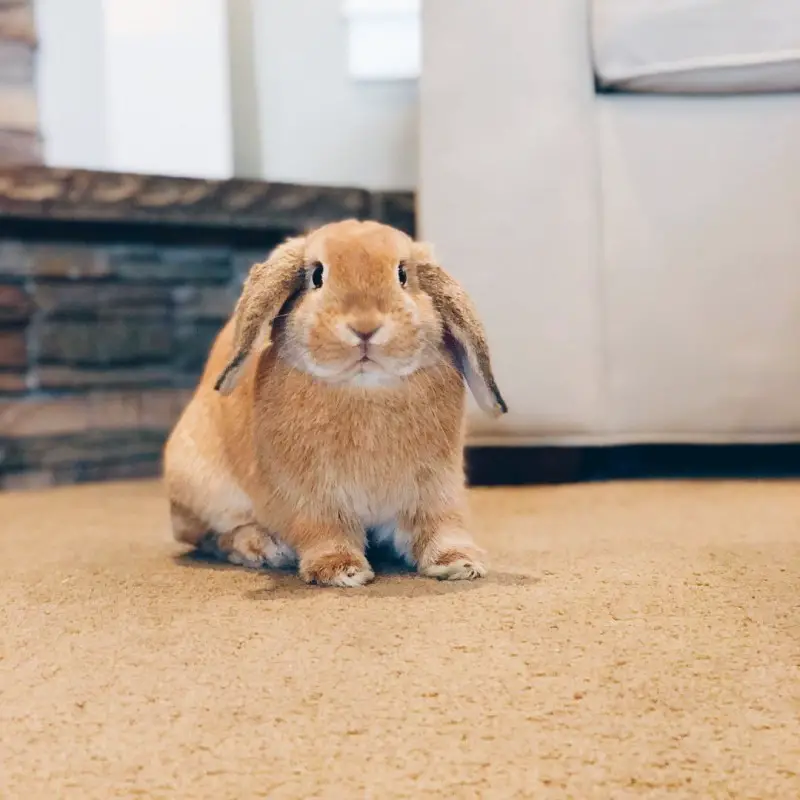
Holland Lops are the perfect representation of cuteness, thanks to their droopy ears and compact size. They are a small breed of rabbit which only weighs between three to four pounds upon full growth. When you learn to take care of your rabbit properly, they can live a healthy and happy life with you.
Remember, rabbits are rabbits. This means the need to always prepare for a litter box. Put a box inside the cage which will serve as litter box. For smaller rabbits, a medium sized plastic litter pan will be enough. It is often recommended to get a bigger box than a smaller one. Inside the litter box, you can put some fresh hay, and a rabbit safe pet bedding under the hay.
Rabbits are also skittish by nature, and love hiding from predators, loud noises, as well as other things which can be scary to them. It is important to prepare hiding places for your rabbits. This can come in the form of a cardboard box, or a series of tunnels, or an easily accessible low, enclosed area. There are some pet stores where you can purchase rabbit hiding places.
FAQs
How much should a Holland Lop weigh?
Holland Lops typically weigh around three to four pounds. This is the ideal weight. In the show ring, however, three pounds is the ideal weight. These rabbits are well known for their cobby and short bodies, with round heads, and overall massive appearance, despite being a small sized rabbit. As an owner, if you notice that the weight is different from the ideal weight stated, it may be important to pay attention to the health of your pet.
What are the uses of Holland Lop Rabbits?
At an average of 3.5 pounds, Holland Lops are no doubt considered as the ideal house pets. They are different from other rabbit varieties, such as the American Fuzzy Lop, being non-aggressive pets. They also have fur, instead of wool. If you are looking for a real dwarf, rabbit variety, Holland Lop rabbits are the best pets to consider. They are small, and make great domestic pets.
At what age are Holland Lops considered as fully grown?
Dwarf breeds like the Holland Lops are usually considered as fully grown when they reach 6 months.
How much should Holland Lops eat?
A Holland Lop that is average sized has the capacity to consume ½ cup of pellets every day. They can be given whenever you want, though the recommended schedule is ¼ cup of pellets in the morning, and another at night. They can also be given all at once, especially when you are going out for the day, or as training treats throughout the entire day. This is the recommended base of their diet.
Do Holland Lops smell?
Unlike other domestic pets, including dogs, rabbits do not have a body odor. This means that you will not notice any odor coming off them. On the other hand, if they are going through certain conditions, such as an ear infection, for example, may give off a musty smell that is not that pleasant. From time to time, a buck, or an intact male rabbit, may also produce a musky scent, especially when he is around a female.
Do Holland Lops bite?
At times rabbits nip just to get attention. If this is what you noticed with your pet, other owners recommend squealing loudly in order to alert the rabbit. They may also bite seriously aside from nipping, also for attention. Another reason for these actions is when they are very aggressive or territorial.
Do Holland Lops shed a lot?
In general, Holland Lops go through a big and clean molt at least once a year. Afterwards, they will keep a nice coat for some months. With this kind of molt, you can remove the excess fur every day, brushing your bunny in order to remove as many dead fur as possible. Note that when your rabbit goes through this process, he or she is not sick. Rabbits that are wool breeds look terrible when they shred.
How long do Holland Lops usually live?
Mini and dwarf rabbits usually live for about 9 to 10 years. In contrast, the larger breeds of lop eared rabbits typically live for about 5 to 6 years. Holland Lop rabbits usually live for about 5 to 7 years. Just like other breeds, a lop rabbit can also survive up to 10 years after they go through the neutering process.
What do Holland Lop rabbits eat?
Rabbits can have starchy vegetables, such as carrot roots, as well as other fresh fruits. However, they should be given such food just a few tablespoons in a day. One thing that should be remembered when feeding lops is that they should not be fed with human foods, such as grains or corn. It is safe to stick to pellets, hay and leafy vegetables for their diet.
Are Holland Lops easy to care for?
Since Lops are small, they are usually easy to handle. In fact, they only need basic grooming.
How do I tell if my rabbit is happy?
Generally, rabbits do not show any outward signs of emotion, both happiness and pain. However, you may notice some changes in the behavior of your bunny, which can indicate their satisfaction.
Do rabbits cry?
Yes, they have tear ducts that will make them cry. However, it is different from the way humans cry. For a rabbit to cry, extreme pain or fear, or a deeply saddening emotional event should occur. When they cry, they whimper or scream audible tones and noises.
Is it possible to discipline a rabbit?
There are various methods that you can use. One is voice training. In doing so, whenever your rabbit does something he or she shouldn’t do, call his name and say “NO” in a firm way. You can also do the “nose down” technique, in which you take your index finger and firmly, yet gently push your rabbit’s nose down toward the floor while saying his name, and the word “no”.
Do Holland Lops hold grudges?
Rabbits, in general, who is not apologized to, may hold a grudge. They can maintain a sulk for several days. You can tell when a rabbit is insulted if they step away, at least beyond easy reach. If you notice your rabbit turning away completely, folding its ears to its back, then a huge grudge is going on.
Do rabbits have good memory?
Rabbits have really good memories. This type of memory is often referred to as orientation memory. This occurs when you spend a lot of time with your rabbits, and they remember the pattern that they always do with you.

